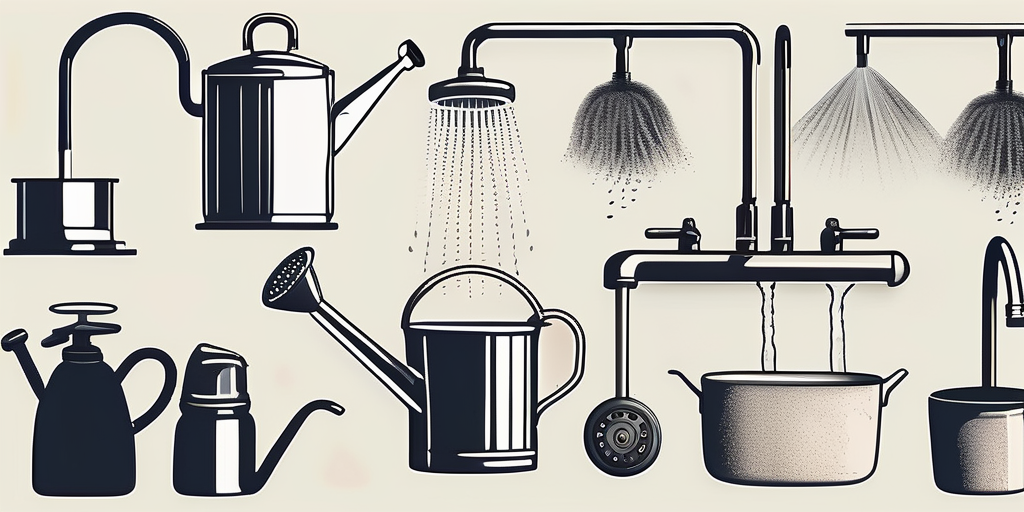
Flowing Through Home Life: Fluid Dynamics in Domestic Settings
Fluid Dynamics Around the House
Fluid dynamics is the study of how fluids behave and interact with their surroundings. While it is often associated with large-scale systems, such as rivers or airplanes, fluid dynamics also plays a crucial role in our everyday lives, even within the confines of our homes. In this article, we will explore the various aspects of fluid dynamics in domestic settings, ranging from the comfort of our living spaces to the functionality of our appliances and even the process of preparing our meals. Join us on this journey as we delve into the fascinating world of fluid dynamics around the house.
Thermal Comfort
One of the fundamental aspects of fluid dynamics in our homes is thermal comfort. Achieving the desired temperature in different rooms can be a delicate balance, as heat exchanges occur between the air, surfaces, and the human body. Factors such as insulation, ventilation, and the distribution of heating and cooling systems all influence the fluid dynamics within our homes.
Insulation is essential in preventing thermal energy from escaping or entering our living spaces. It acts as a barrier, reducing heat transfer through walls, floors, and attics. By effectively insulating our homes, we can create a stable and comfortable environment regardless of the external temperature. Insulation materials, such as fiberglass, cellulose, or foam, work by trapping air pockets that limit heat conduction. These materials can be installed in various areas of the house, including the walls, roof, and floors, to provide maximum thermal protection.
Ventilation, on the other hand, plays a crucial role in maintaining a healthy and comfortable indoor environment. It allows for the exchange of indoor and outdoor air, ensuring a fresh supply of oxygen and removing pollutants, odors, and excess humidity. Ventilation systems can be natural or mechanical, with the latter utilizing fans or air exchangers to circulate air throughout the house. By regulating temperature and humidity levels, ventilation contributes to thermal comfort by preventing the buildup of stale air and controlling the moisture content in the air.
Heating and cooling systems, such as air conditioning units or radiators, rely on fluid dynamics to distribute warm or cool air throughout a room. Convection currents play a significant role in this process. When a heating system is activated, air near the heat source absorbs thermal energy and becomes less dense. This warm air then rises, creating an upward flow that draws in cooler air from the surroundings. As the cool air comes into contact with the heat source, it gets heated and the cycle continues, ensuring a consistent and even distribution of warmth.
In the case of air conditioning, the process is reversed. The cooling system extracts heat from the indoor air, causing it to become denser and sink towards the floor. This creates a downward flow that pulls in warmer air from the surroundings, which then gets cooled and circulated back into the room. By understanding the principles of fluid dynamics, engineers can design heating and cooling systems that optimize thermal comfort while minimizing energy consumption.
Appliances
Fluid dynamics also influence the performance and functionality of various household appliances. From washing machines to dishwashers, understanding the flow of fluids within these devices is crucial for their proper operation.
Take, for example, a washing machine. The movement of water, detergent, and clothes inside the drum depends on the design of the appliance and the rotation of the agitator or the drum itself. The interaction between these components creates complex fluid flow patterns, ensuring that the clothes are thoroughly cleaned and rinsed.
When you load your dirty laundry into the washing machine, you may not realize the intricate dance that occurs within the appliance. As the water fills the drum, it begins to circulate in a carefully choreographed manner. The agitator, or the rotating drum, creates a swirling motion, causing the water and detergent to mix thoroughly. This turbulent flow helps to dislodge dirt and stains from the fabric, ensuring a deep clean.
As the washing machine progresses through its cycles, the fluid dynamics continue to play a vital role. During the rinse cycle, fresh water is introduced to remove any remaining detergent and debris. The water flows in a controlled manner, ensuring that every garment is thoroughly rinsed and free from any residue.
Similarly, dishwashers utilize fluid dynamics to efficiently distribute water and detergent across the dishes. As the water jets spray from different angles, the flow patterns created help remove stubborn food particles and ensure proper cleaning.
Imagine the symphony of water jets and rotating arms inside a dishwasher. As you load your dirty dishes, you may not be aware of the intricate dance that takes place to ensure they come out sparkling clean. The water jets shoot out forcefully, creating a turbulent flow that reaches every nook and cranny of your dishes. This dynamic flow pattern helps to dislodge food particles and grease, ensuring a thorough cleaning.
But the fluid dynamics in dishwashers go beyond just cleaning. The flow of water is also carefully controlled to optimize efficiency. By strategically placing the water jets and designing the internal structure of the dishwasher, manufacturers ensure that every dish receives the right amount of water and detergent, minimizing waste and maximizing cleanliness.
Next time you use your washing machine or dishwasher, take a moment to appreciate the role that fluid dynamics play in their operation. From the swirling motion inside the washing machine to the forceful water jets in the dishwasher, these appliances rely on the principles of fluid flow to provide you with clean and fresh laundry and dishes.
Food Preparation and Cooking
Fluid dynamics significantly impact the process of food preparation and cooking in our homes. Whether it is boiling water, frying, or baking, understanding the principles behind fluid flow and heat transfer is essential for achieving delicious and well-cooked meals.
When boiling water, for instance, convection currents play a crucial role. As heat is applied to the bottom of the pot, the hotter water rises to the top, allowing for even cooking and ensuring a consistent temperature throughout.
In frying, fluid dynamics influence the transfer of heat from the oil to the food. The movement of oil around the food helps maintain a consistent temperature and ensures even cooking. Additionally, the fluid flow also affects the dispersion of flavors, allowing them to infuse into the food.
Baking involves more complex fluid dynamics. As heat is transferred from the oven to the batter or dough, the trapped air expands, causing it to rise and create the desired texture. Understanding these fluid flow patterns is crucial in achieving perfectly risen bread or a moist and fluffy cake.
Plumbing and Cleaning
Finally, fluid dynamics play a significant role in the functioning of our plumbing systems and cleaning processes. From the flow of water through pipes to the operation of showerheads and faucets, fluid mechanics are essential for water distribution.
The design of plumbing systems, such as the sizing of pipes and the positioning of valves, is based on fluid flow principles. By ensuring proper water pressure and efficient flow, these systems allow us to access clean water whenever needed.
When it comes to cleaning, fluid dynamics influence the effectiveness of processes such as pressure washing or using a vacuum cleaner. By creating a flow of fluid, whether it is water or air, the force generated helps remove dirt and debris, leaving surfaces clean and fresh.
To conclude, fluid dynamics pervade our homes in various ways, from maintaining thermal comfort to the functionality of appliances and the cooking process. Understanding these principles not only helps us appreciate the inner workings of our domestic environments but also enables us to optimize efficiency and create a more enjoyable living space. So, the next time you turn on the air conditioner, do the laundry, or prepare a meal, remember the underlying world of fluid dynamics that contributes to making our homes comfortable and functional.

